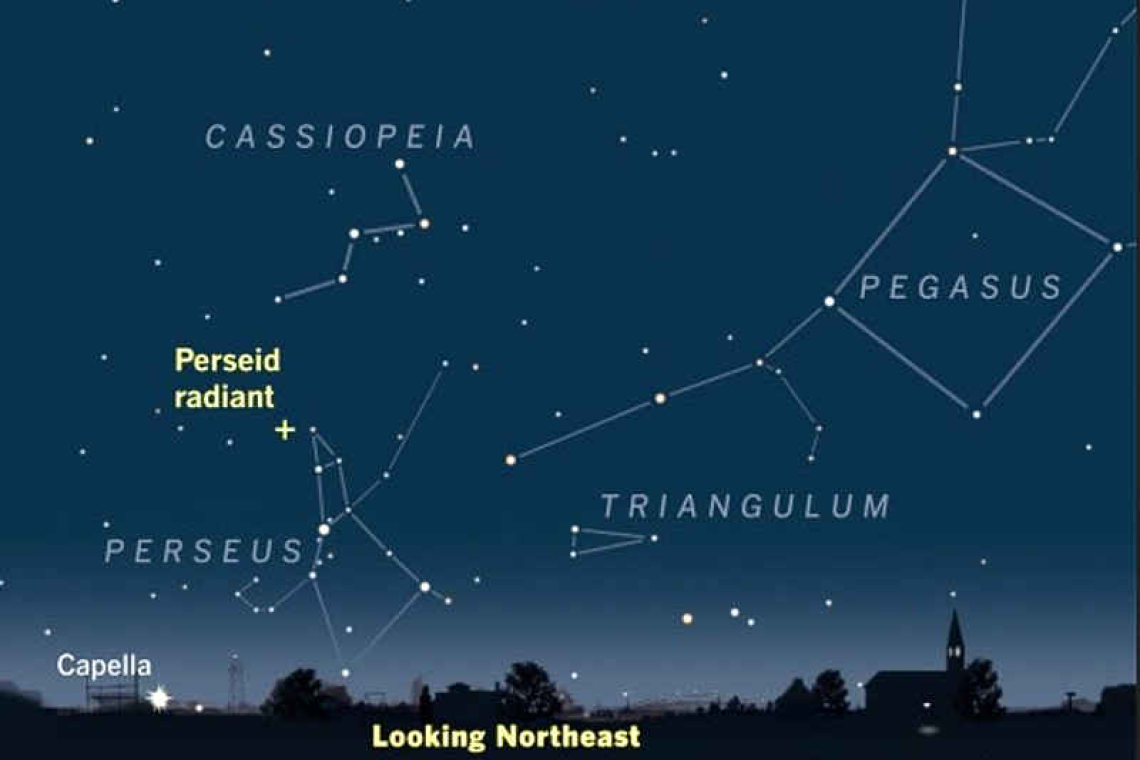~ St. Maarten’s Backyard Astronomy for August 2-4 ~
Sun rises at 5:51am
Sun sets at 6:45pm
Lunar phase: New moon, virtually absent
This weekend, the moon is hiding in the glare of the sun, it’s the start of a brand new lunar cycle. This happens every 28 days or so, which is the origin of our word for month. Think: Moonth! The absence of moonlight can be a good thing, especially when you want to see some meteor shower activity. And, yes, this is the time of year when we often see those lovely shooting stars. In fact, we are at the nexus of two meteor showers right now! The Delta Aquariids and the Perseids are giving us double the fun of shooting star gazing!
The Delta Aquariids ramble on for weeks and they are continuing this weekend and through next week. These meteors can offer up to 20 streaks per hour when the moon is absent. These also are a bit earlier in the night than most meteor showers, so you can find them before midnight.
The Perseids will continue from now until around September 1. They will peak in the wee hours of the morning around August 12, but earlier searching of the sky will often yield rewards. When the Perseids are at their best, they provide up to 80 streaks per hour! We are already moving through the Perseids field now, so why not give it a go?
How best to watch for meteors?
1. Avoid the moon and any other sources of light. Buildings, cars, advertisements and even your phone can wreck your “night vision”. Give your eyes at least 15 minutes of darkness to adjust to the task you are asking of them.
2. Just look up! You don’t have to worry about where to look, even though we often mention the “radiant point” – the place where the meteors appear to emanate from – it’s not that important when it comes to seeing the actual shooting stars, they cross the sky, so just look up!
3. Get a reclining lawn chair or a blanket and lay down so you can look up for hours without straining your neck. Our beaches are ideal for dark zones that allow you to recline at ease and enjoy the night.
4. Hope for no clouds! Yes, our biggest worry is a cloudy sky that messes up the chances of seeing meteors – even though they are there, we cannot see them! Let’s hope for clear skies this weekend!
Thank you for keeping up with the Night Sky articles, backyard astronomy designed for St. Maarten sky viewing. FYI: If you are out later on in the week, note that each star rises about four minutes earlier each day than written here, and the moon rises 50 minutes later. Night Sky is researched and compiled by Lisa Davis-Burnett. Earthsky.org is a key resource for information and images. Questions or comments? Email This email address is being protected from spambots. You need JavaScript enabled to view it.







